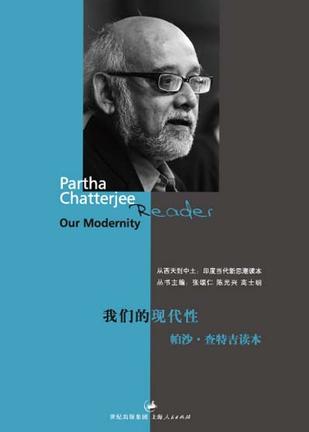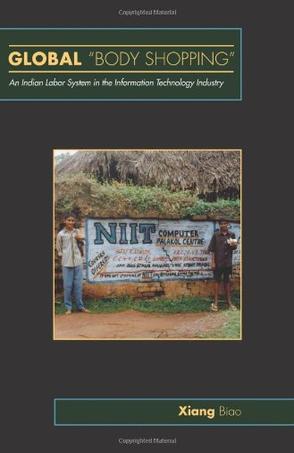-

增长为什么重要
印度的发展奇迹可以与中国奇迹媲美。本书梳理了从1950年开始,印度在走向增长的过程中同时减少贫困人口的多方面努力。作者用通俗易懂的智慧,以非专业的语言向普罗大众传播印度之所以成功发展的深层次的经验,当然书中也点明了发展中国家应如何避免陷阱的失败教训。大量的实地考察数据也为本书的一大亮点。 -

貧窮創新
◎聯合推薦 雲門舞集創辦人/林懷民 大陸工程董事長/殷琪 經濟部國貿局局長/黃志鵬 讓林懷民愛不釋手的印度專書!《全球錢景看中天》、《文茜世界週報》熱烈報導! 猛的經濟成長渴求mix心靈宇宙無盡探索,一邊向世界吸金,一邊召喚創意人朝聖。印度究竟怎麼回事?年輕且古老、先進但落後、奢華又貧窮;不可思議的印度,正在改變世界! 奢華與赤貧、現代與古老、效能與草率;不可思議的印度,正在改變世界! 過去四年內,印度平均經濟成長率高達8.8%;今年一月,印度擠下台灣,成為第四大外匯存底國。這個衝勁十足的成長引擎,是全亞洲唯一不靠出口刺激成長的國家。它沒有經歷大規模工業化,就迅速發達起來。跳過製造業,直接發展服務業,更是史上唯一。 印度模式最特別之處,在於善用其最大弱點——貧窮——創新,橫掃金字塔底端財富。從電信、醫療到消費性產品,印度的破壞式創新幾乎貫穿所有產業,改變世界競爭規則。以低價高效率的軟實力,吃下全球近半數的外包市場,刷新全球商業模式。 2008年初春,《天下雜誌》,派出兩組人馬,分頭前往印度改變世界的兩條走廊。一個以貧窮孕育出低價創新,改變世界競爭規則。一個則以清貧的信仰,提出對物質主義的反思。 從德里到孟買這條一千四百多公里的成長走廊,是印度最具潛力的地區,全球企業蜂擁而至。《天下》採訪了宏達電、聯強、大陸工程、農友種苗等台商企業,親身經歷台商深入印度的奮戰故事。 另一組人從北方的達蘭莎拉,一路往南走到瓦拉納西恆河和菩提迦葉。這條綿延上千公里的心靈走廊,雖然是印度物質生活最艱困的窮鄉僻壤,卻吸引了千萬信徒,到印度尋找自己和生命的意義。在喜馬拉雅山麓,《天下》記者排除萬難,在過年閉關後第一時間專訪達賴喇嘛,請他為二十一世紀的領導人尋找出路。這一路上,坐過駱駝,走過恆河,甚至搭了兩天夜車,與蟑螂共眠,最後到達佛教聖地——釋迦牟尼佛悟道的地方。即使路途困頓,卻被印度人樂天知命的笑容感動。 關於印度,另一個大家關注的重點,就是為什麼印度培養了那麼多的軟體人才?甚至在美國矽谷,每三個軟體工程師中就有一個是印度人。本書特別收錄《天下雜誌》報導的「印度打造百萬軟體人才的祕密」、「印度理工學院──百萬富翁製造機」等精彩文章,與讀者一起深入了解印度獨特的邏輯思考和數理教育背後的祕密。 除此之外,本書也收錄《康健雜誌》所做的印度瑜珈朝聖完整報導。這趟身心靈之旅,記錄了在世界瑜珈首都虛凱詩每天練瑜珈、到南印度的「奧修國際靜心村」跳舞、靜心的情形,也分享了在喜馬拉雅山腳下體驗最原汁原味的印度傳統醫學──阿育吠陀SPA的心得,並提供實用的旅遊資訊,供讀者規劃幸福旅行的參考。 -

White Tiger
-

Caste
Caste: Its Twentieth Century Avatar is a collection of essays by experts on the complex topic of the caste system prevalent in India. The book is an attempt to describe the effects of India’s caste system on the various political, social and economic aspects of the country. Caste is a kind of social division of people based on their lifestyle, occupation, hierarchical status, notion of purity and many other factors. The caste system in India is one of the primary drivers that divide the society into separate social groups. It has been a subject of numerous studies and also serves as a reference to the study of caste-like divisions outside of India. Caste: Its Twentieth Century Avatar edited and introduced by the author describes to the reader the influence of the caste system in the current scenario, in which India is on the brink of modernization. The book discusses how the ancient caste system of India, practiced even today, comes in the way of the country's progress. The book goes on to give an account of the role of women in keeping the caste system alive in the present day, the correlation between caste and the Indian economy and its effect on Hinduism. It also gives the reader an understanding of the backward classes’ movements and struggle for power in Tamil Nadu, Bihar and Uttar Pradesh. It also touches upon the topic of efficiency versus job reservation, caste systems existing among Indian Christians and Muslims, and critiques relating to the Mandal Commission Report and its subsequent judgement. -

我们的现代性
《从西天到中土•印度当代新思潮读本•我们的现代性:帕沙•查特吉读本》收录了查特吉的五篇文章,“流行文化批判”、“我们的现代性”、“社群在东方”等;经由这些文章,可以了解查特吉所擅长的关于下列问题的批评、思考:流行文化在塑造大众对文化乃至社会、政治事件的认知方面的影响,现代社会的公共生活,以及亚洲各国内部不同社会阶层、群体的自我认知及其交往。 -

Global "Body Shopping"
How can America's information technology (IT) industry predict serious labor shortages while at the same time laying off tens of thousands of employees annually? The answer is the industry's flexible labor management system - a flexibility widely regarded as the modus operandi of global capitalism today. "Global "Body Shopping"" explores how flexibility and uncertainty in the IT labor market are constructed and sustained through concrete human actions. Drawing on in-depth field research in southern India and in Australia, and folding an ethnography into a political economy examination, Xiang Biao offers a richly detailed analysis of the India-based global labor management practice known as "body shopping."In this practice, a group of consultants - body shops - in different countries works together to recruit IT workers. Body shops then farm out workers to clients as project-based labor; and upon a project's completion they either place the workers with a different client or "bench" them to await the next placement. Thus, labor is managed globally to serve volatile capital movement. Underpinning this practice are unequal socioeconomic relations on multiple levels. While wealth in the New Economy is created in an increasingly abstract manner, everyday realities - stock markets in New York, benched IT workers in Sydney, dowries in Hyderabad, and women and children in Indian villages - sustain this flexibility.